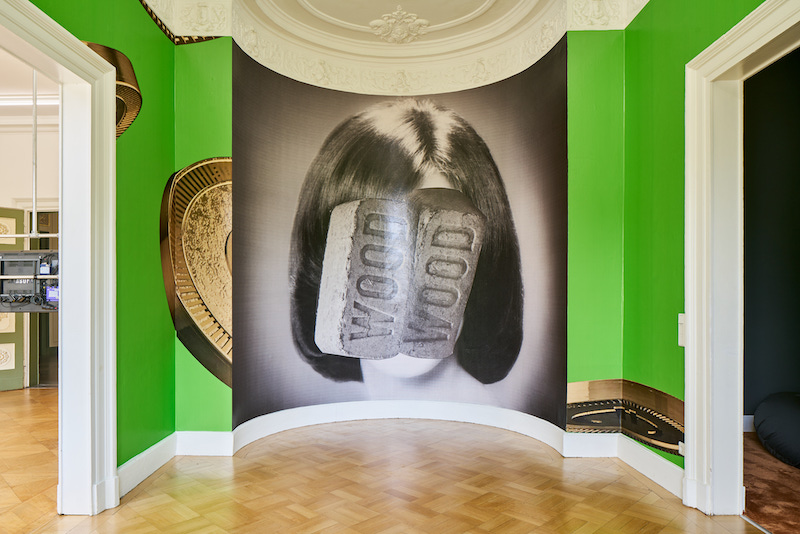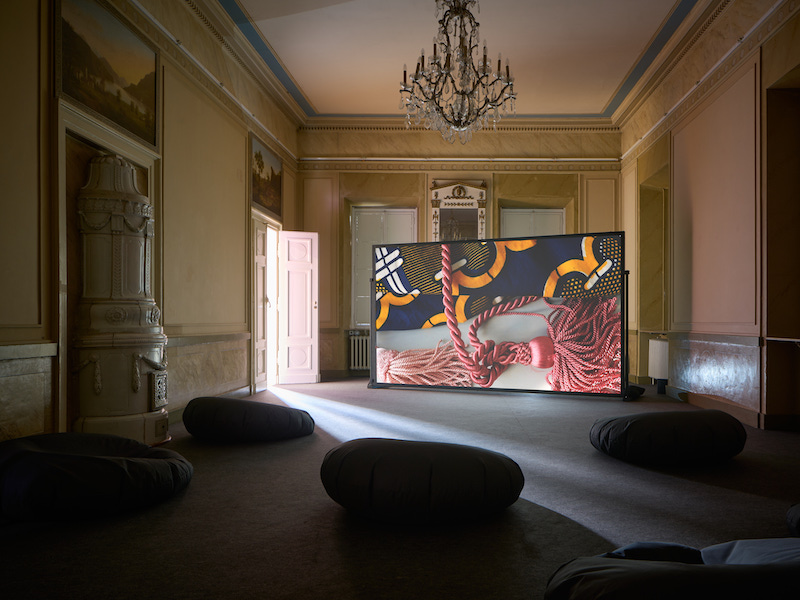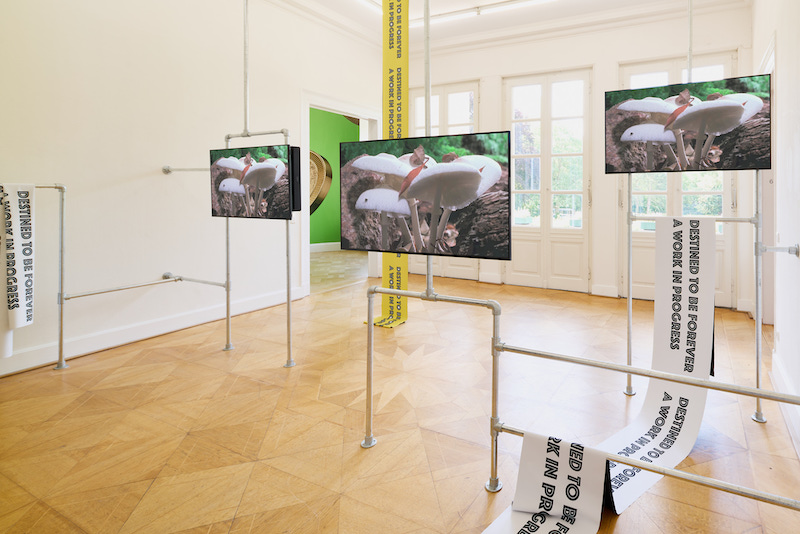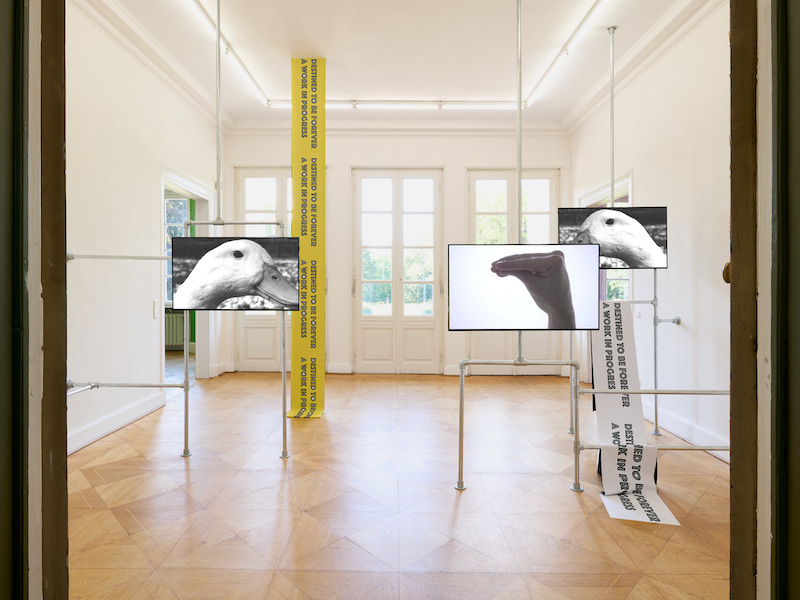Search
To search for an exact match, type the word or phrase you want in quotation marks.
A*DESK has been offering since 2002 contents about criticism and contemporary art. A*DESK has become consolidated thanks to all those who have believed in the project, all those who have followed us, debating, participating and collaborating. Many people have collaborated with A*DESK, and continue to do so. Their efforts, knowledge and belief in the project are what make it grow internationally. At A*DESK we have also generated work for over one hundred professionals in culture, from small collaborations with reviews and classes, to more prolonged and intense collaborations.
At A*DESK we believe in the need for free and universal access to culture and knowledge. We want to carry on being independent, remaining open to more ideas and opinions. If you believe in A*DESK, we need your backing to be able to continue. You can now participate in the project by supporting it. You can choose how much you want to contribute to the project.
You can decide how much you want to bring to the project.

The world is round, but people meet in the corners: Eli Cortiñas, a Spanish artist of Cuban descent, born in Las Palmas de Gran Canaria.She lives and works in Berlin. I was born in Almería, Spain, but met Eli in Berlin, Germany. Eli is having her first institutional solo show of this scale in Germany at the Kunstverein Braunschweig. The name of the show is The Body is The House, The House is But Haunted. The title has been taken and twisted from the 1968 work A casa é o corpo (The House is the Body) by Lygia Clark, an artist born in Belo Horizonte, Brazil.
These crossroads are commonplace in Eli’s artistic practice. To create her video and spatial installations, on one hand, she intersects contemporary and historical visual cultures, on the other, using montage and collage, she interweaves and dissects images and narratives from various heterogeneous sources: Internet, analogue films, TV shows, advertising, or propaganda.
Discourses, nowadays, will be intersectional or they won’t be! Feminism, postcolonialism, power, decolonial theory, female identity, historic memory, capitalism of exhaustion and the language of economics are present in Cortiñas’ artworks. Thus, artistic appropriations, recordings, and Creolization are featured more strongly than ever to counteract the society established codes with poetic and sensual variations in diverse formats. The artist propitiates a dynamic encounter, where openness to differences prevail, guaranteeing diversity, and revealing the production and consumption contexts inscribed in the images, as well as the patterns of perception with which they operate.

Destined to be Forever A work In Progress, video installation 2-channels, 2022
But let’s go back to roundness, junctions, and storytelling. At Kunstverein Braunschweig, an early classicist villa —built in 1808—, the entrance is framed by two Ionic columns surmounted by a frieze with the inscription SALVE HOSPES (Latin for “Be welcome, guest.”) Inside, a two-storey circular vestibule distributes the surrounding rooms. This villa was many things before a museum, and it was, of course, a house. In Eli Cortiñas’ exhibition the house is shown as a circular organism where the body-house-organism is but haunted. The whole show itself functions as a gigantic multi-sensorial organically evolved collage. One of the practices most used by the artist. After entering the rotunda, “welcoming” the visitors is the new piece whose name could not be more appropriate to the times we live in, Destined to be Forever A work In Progress, a two-channel video installation made out of appropriated images with the aim of change the espectator’s point of view to focus on the body, which is the house.

The Body is The House, The House is But Haunted, 4 collages series, wallpaper, 2022
Under the homonymous name of the exhibition, follows a meta-collaged room with 4 analogue collages on paper over a gigantic digital collage on wallpaper. The interconnected rooms allow the artworks to be seen from one place to the next and back. Like an encircling dance, each room is a composition of moving images, enclosed static images in wallpaper, sound, hanging texts and architectural elements.

Exhibition circular view
The world around us is increasingly being shaped by algorithms and scripts: knowledge is being negotiated based on algorithmic formulas made up of ones and zeros. And these zeros and ones can initiate actions. Among the results of these technological developments are the ability of machines to “learn” operations, and the emergence of new forms of interaction between human and machine. Then “Who owns the narrative?” ask Cortiñas in her video piece Not Gone With The Wind. Introducing Sofia, an AI in conversation with another AI, Bina 48 and a chat bot, the work takes on feminisation and the historical racial and gender bias embedded in technology. The thoughtful conversation between the three AI has been masterfully made via editing in shot/reverse shot mode. Female roles, motherhood, and what is happiness if not the image of a joyful little Bambi jumping on the beach. The Bambi video became viral during the pandemic, when severe lockdowns were happening all over the world. And images of the “natural” world taking over our cities and landscapes started pullulating as a romantic, but unfortunately short winded, reflection on how humans have negatively impacted this planet and neglected their companion species.

In Order For People to Feel It. That’s Called “Soul”, wallpaper, 2022
Between accelerated capitalism, bitcoins, animals, mushrooms, systemic exhaustion, humans and non-humans, the end of this impressive circuit reaches the rich room of mirrors, where for sure the “walls have feelings”, like the namesake piece by Eli. Architecture and ideology, an association as old as humanity, in here she explores how the urban fabric, the ecosystem of buildings and objects around us shows endless ideologies, governments and policies that overlap and interweave in a narrative that is anything but linear.

Walls Have Feelings, video installation monochannel, 2019
If all (in)justice comes from (in)discrimination (in) all its combinations, what is the “art” of making sense? How can art be effective without being (in)doctrinating? With great hope, art will continue to be that niche of freedom to question universal systems, which, in their efforts to represent life and knowledge, lead us to a homogenised, exalted, radicalized, hetero-patriarchal and reduced way of thinking. The artworks of Eli Cortiñas are rhizomes that will shake your brain to branch, rebranch, expand and spread: a critical exercise to keep the brain muscle active!

I’ve Always Demanded More From The Sunset, video installation 3-channels, wallpaper, 2022

I’ve Always Demanded More From The Sunset, video installation 3-channels, 2022

The Body is The House, The House is But Haunted, 4 collages series, wallpaper, 2022

Vista expo, al fondo video Not Gone With The Wind, video installation monochannel, 2020
All images courtesy Kunstverein Braunschweig. Photos © Joe Clark
[Front image: Your Bitcoin Will Not Save You, wallpaper, 2022]
The Body is The House, The House is But Haunted
Curated by Nuno de Brito Rocha and Benedikt Johannes Seerieder. On view until 2nd of october

María Muñoz-Martínez is a cultural worker and educator trained in Art History and Telecommunications Engineering, this hybridity is part of her nature. She has taught “Art History of the first half of the 20th century” at ESDI and currently teaches the subject “Art in the global context” in the Master of Cultural Management IL3 at the University of Barcelona. In addition, while living between Berlin and Barcelona, she is a regular contributor to different media, writing about art and culture and emphasising the confluence between art, society/politics and technology. She is passionate about the moving image, electronically generated music and digital media.
Portrait: Sebastian Busse
"A desk is a dangerous place from which to watch the world" (John Le Carré)